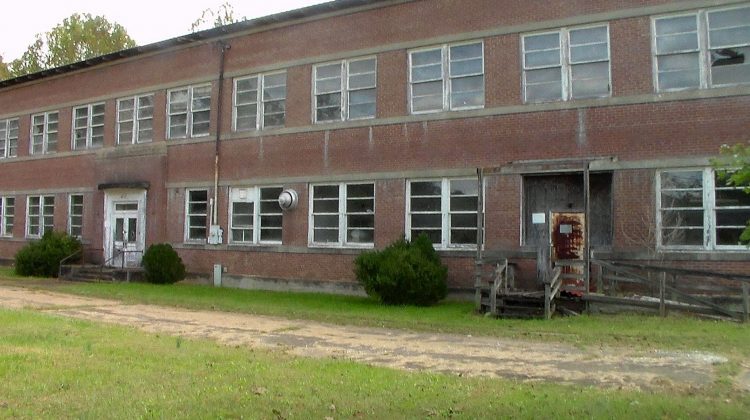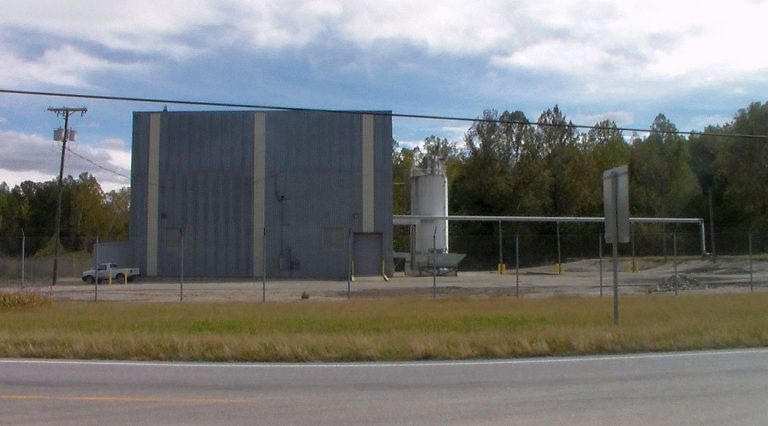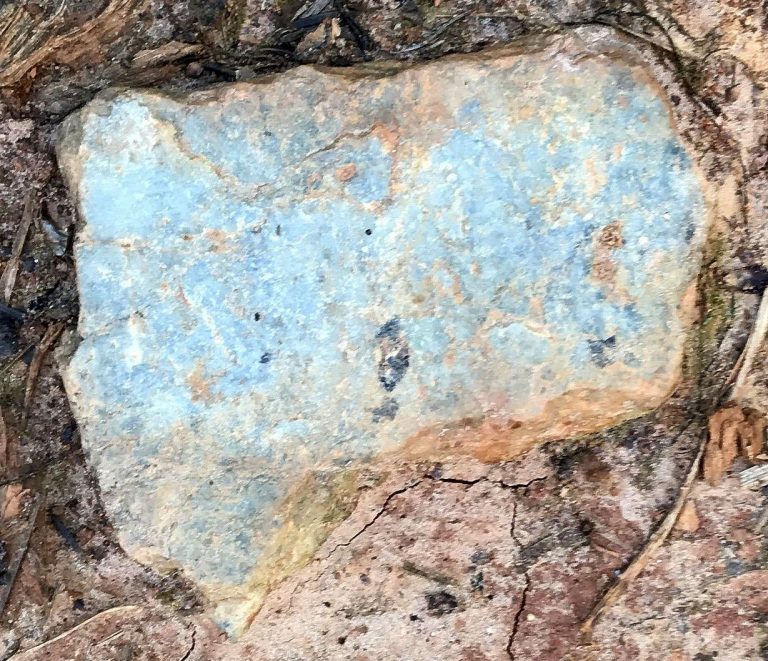
The best known superfund1 cleanup site has to be the Love Canal, named for William T. Love. It is located in northwestern New York State. Originally envisioned as a community, this 70-acre tract later became a dumpsite for the Hooker Chemical Company.
At the end of its use in the early 1950s, the waste site was sold for the sum of $1 to the Niagara Falls School Board, for the purpose of constructing a new school. Built into the sale was a far-reaching disclaimer to avoid legal action against Hooker.
The end result was the conceiving of a community riddled with miscarriages, chromosomal damage, birth defects, and leukemia. Media-driven notoriety peaked during the late 1970s.
American Cyanamid Superfund Site
I am a chemist. I was familiar with the Love Canal saga. There were shocking stories of kids playing in eerie puddles with rocks that glowed in the dark. Even so, to me, this was just a story. I had experienced nothing personally – that is until I moved from New Jersey to Nelson County, Virginia in 1989. There I came face-to-face with another superfund site, the Piney River American Cyanamid superfund site.
In 1944, American Cyanamid bought the Virginia Chemical Corporation (a subsidiary of Interchemical Corporation). They took over the processing of local ore used for the production of titanium dioxide. TiO2 is used in the manufacture of commodities such as paint, paper, and plastics. Unfortunately, toxic waste materials weren’t handled properly despite the presence of technically-trained personnel. Events were on the horizon that would reveal the huge cloud within the thin fiscal silver lining.

Hurricane Camille
Nelson County, Virginia is situated along the Blue Ridge Mountains of Virginia. These mountains play a role in weather events. In August of 1969, one weather event scarred the county consciousness, not only because of the devastating loss of property, but also due to personal tragedy. It struck about the midnight hour. A record-breaking rain – some 27” of it from the former Hurricane Camille – fell on already saturated soil. More than 100 people lost their lives.
But our topic is not Camille itself. It is the American Cyanamid superfund site. Camille was largely responsible for the shutdown of American Cyanamid’s Piney River branch, although the shutdown did not officially take place until 1971. It was not American Cyanamid alone in that area that had to shut down.
The local railway also shut down. This was partly as a result of Camille, partly as a result of the shutdown of American Cyanamid (with the transfer of operations to Savannah, GA), and partly as a result of the shutdown of a nearby Dominion Mineral Division of the Riverton Lime & Stone Company, which extracted and shipped the surprisingly abundant local mineral aplite.
So What Happened Next?
The American Cyanamid property was purchased by local politician S. Vance Wilkins who some years later sold it to U.S. Titanium. Although his role in future events would be called into question, he was cleared of any culpability.
Such was not to be the case for another politician. A Nelson County Times news article from January, 2014 (cited below) speaks of that, then adds that a later scam that included the titanium property involving Senator Harrison “Pete” A. Williams was exposed by the FBI.
According to the article, agents utilized Hollywood-style antics to expose the illegal activities. FBI agents attired themselves as Sheiks willing to finance the restoration of the industry with the goal of illegally obtaining lucrative contracts. Williams was found guilty and sentenced to three years imprisonment, although some argued he was innocent as he claimed, and there is some question remaining of his guilt. Williams would serve two years of the sentence.

But intrigue was not the only harm here. There was serious environmental damage and damage to wildlife (not to mention the residents themselves) resulted. From 1977 to 1981 there were six major fish kills, claiming something like 200,000 fish. One major waste product generated in titanium ore processing is copperas, a hydrated form of iron sulfate (FeSO₄•7H₂O).
Iron waste is a common by-product in the processing of titanium ore, particularly of ilmenite. Curiously, the pure sulfate itself is sold in stores in small quantities for certain anemias. Consumed in larger doses, it is quite toxic. And because it is water soluble, it can be readily spread throughout the environment.
Who Were the Brains?
What process or processes were used to generate such wastes? The author learned through Google patent name searches that there were at least four major technical personnel who were instrumental in obtaining U.S. patents involved in ore extraction or titanium processing:
Winfred Joseph Cauwenberg
Guy C. Marcot
Sheldon Page Todd
Stephen Anthony Lamanna
Primarily, U.S. Patent No. 2066093 would have been employed. This patent calls for the combination of sulfuric acid, some dextrine (an organic compound), and (presumably) pulverized ore.
The latest EPA report the author has seen is that for the year 2015. Even then, decades after first identifying the need for remediation, there is concern over high water acidity threatening the leaching of metals from surrounding soil.
Evidence of Titanium’s Former Glory
Although titanium is not currently of commercial interest to Nelson County, evidences of its past importance do exist. Street names reflect the fact. One road is Rutile Lane (Rt. 796). It is named after the titanium ore rutile, rich in TiO₂. Tiny crystals of rutile are reddish brown, but larger crystals are opaque and metallic. Traces of rutile impart a light blue waxy appearance to quartz rocks. See a sample photographed in a driveway located on Blue Rock Lane (Rt. 695).

There is another ore of titanium found in the county, ilmenite, an iron and titanium ore with the basic chemical formula FeTiO3. This abundant mineral is the main titanium ore found in Nelson County. Needless to say, it is this ore that is the source of much of the iron incorporated in the waste copperas.
Here is an outstanding example of titanium ore that incorporates both ilmenite and rutile in one specimen. It was taken from a nearby former quarry located at Wood’s Farm in Roseland, Nelson County.
In Conclusion
Tragic events often involve multiple causative factors. The American Cyanamid tragedy is no exception. The plentiful raw material and its rural location led to a successful titanium production facility. There was abundant employment and the community accepted this with rejoicing.
Yet nature stepped in with a violent storm and severe underlying difficulties were revealed. Careless toxic waste maintenance, greed, and political intrigue amplify the problem resulting in the need of castigation, government intervention, and incarceration. Part of the problem was, and to some extent still is, the wrong perspective that if commerce and people receive some benefit from engaging in a venture, whatever harm may occur is somewhat inconsequential. The superfund law suggests not everyone agrees.
1 One online definition of a superfund is “a United States federal government program designed to fund the cleanup of sites contaminated with hazardous substances and pollutants .
Note: You might also enjoy Why Sand Filtration to Treat Wastewater?
References:
- Environmental Protection Agency. Superfund Site: U.S. Titanium Piney River, VA
- Environmental Protection Agency. 27 September 1984 Letter to Don Neal
- U.S. Patent No. 2066093, Google. Method for extracting titanium compounds from titanium-containing ore
- U.S. Patent No. 2771342, Google. Production of non-caking copperas
- U.S. Patent No. 2824050 A, Google. Preparation of gaseous streams comprising TiCl₄ and AlCl₃
- Department of Mines, Minerals, and Energy. Blue Quartz in Virginia
- Nelson County Times. Piney River Hustle: Local site played role in scandal popularized by Hollywood film, by Katherine Lacaze (Jan. 15, 2014)
- Rockfish Valley Foundation. The Blue Ridge Railway

Dang, that’s tough.
Terrific article. I’m researching this Superfund site, titanium mining, and related topics for a documentary poetry project. Also a Nelson resident, also an active Community Scholar at UVa, glad to “meet” you here.
Howdy!
Great background on what happened at Piney River. I’m riding the rail trail there today and was looking into it’s history. Very sad this happened.